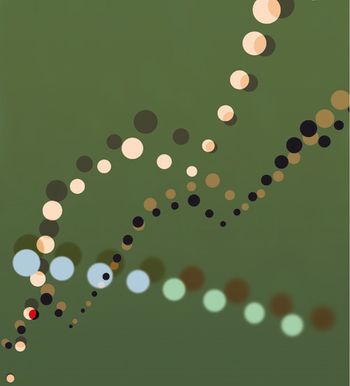
The Column
This is the third in a series of articles exploring topics that will be addressed at the HPLC 2016 conference in San Francisco, USA, from 19 to 24 June.

The Column
This is the third in a series of articles exploring topics that will be addressed at the HPLC 2016 conference in San Francisco, USA, from 19 to 24 June.

The Column
LGC Standards has been awarded a Responsible Sourcing status by Sedex for its Standards division in Germany. A non-profit membership organization, Sedex is dedicated to improving responsible and ethical business practices in global supply chains.

The Column
Researchers from the USA have developed a simple and derivatization-free gas chromatography (GC) method for the quantitative analysis of oleic acid and related fatty acids.

The Column
Researchers from Universidade Federal de Minas Gerais, Brazil, have used multiple analytical techniques including IEC and ATR‑FTIR spectroscopy to investigate bovine meat adulteration.

The Column
To mark the Chromatographic Society’s 60th birthday, The Column interviewed the current President of The Chromatographic Society, Dr. Paul Ferguson, and Associate Principal Scientist for Separation Science at AstraZeneca, Macclesfield, UK, on the past, present, and future of the Chromatographic Society - and separation science.

The Column
Click the title above to open The Column May 24, 2016 Europe & Asia issue, Volume 12, Number 9, in an interactive PDF format.

The Column
Click the title above to open The Column May 24, 2016 North American issue, Volume 12, Number 9, in an interactive PDF format.

The Column
Incognito shares his thoughts on the importance of specifications for method transfer in gas chromatography (GC).

The Column
The 6th International Network of Environmental Forensics (INEF) 2016 conference will be held from 27–30 June at Örebro Castle in Örebro, Sweden.

The Column
Structural, bioanalytical, characterization, and quality control studies are critical for successful drug development. These studies must be as accurate, sensitive, and selective as possible, and liquid chromatography coupled to tandem mass spectrometry (LC–MS–MS) has been the technique of choice for many areas of small molecule analysis for the past 30 years. During that time, rapid improvements in analytical technologies have supported the development of more sensitive and robust methods. However, the pharma and biopharma industry continues to need more powerful instruments and more diverse methods, particularly as therapeutics have expanded to include large molecules. This work follows on from an earlier article that explored the limitations of LC–MS–MS for bioanalysis of biologics. This article considers some of the current issues for analysis of small and large molecules, and emerging trends in method development.